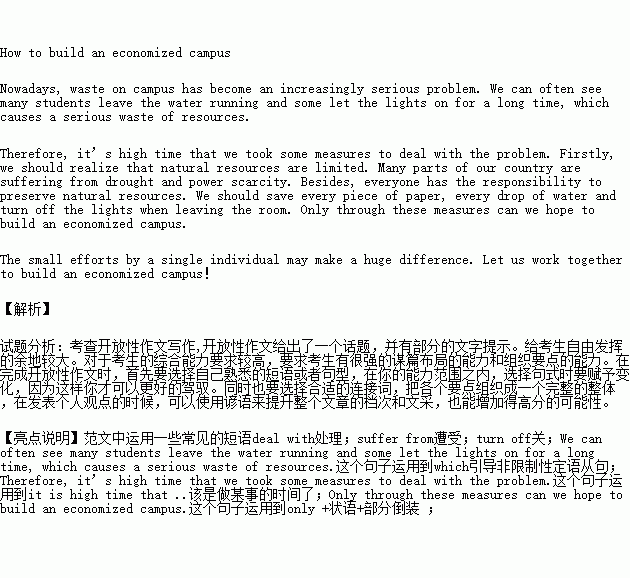ΧβΡΩΡΎ»ί
ιΟφ±μ¥ο
ΦΌ…ηΡψ «άνΜΣ, ΡψΥυ‘ΎΒΡ―ß–ΘΉνΫϋάΥΖ―œ÷œσΚή―œ÷ΊΘ§±»»γ≥ΛΝςΥ°ΓΔ≥ΛΟςΒΤΒ»ΓΘΈΣ¥Υ―ß–Θœρ»Ϊ–Θ Π…ζΖΔ≥ωΫ®…ηΓΑΫΎ‘Φ–Ά–Θ‘ΑΓ±ΒΡ≥Ϊ“ιΓΘ«κΡψ“‘How to build an economized campusΈΣΧβ–¥“ΜΤΣ”Δ”οΉςΈΡΘ§ΖΔ±μ‘Ύ–Θ±®”ΔΈΡΑφ…œΓΘ“Σ«σΑϋά®“‘œ¬“ΣΒψΘΚ
1. »œ ΕΒΫΫΎ‘ΦΉ ‘¥ΒΡ÷Ί“Σ–‘ΘΜ
2. ¥”ΓΑΈ“Γ±ΉωΤπΫΎ‘ΦΉ ‘¥Θ§ΦΑ ±ΙΊΒτΒΤΓΔΒγ…»Β»ΘΜΥφ ÷ΙΊΥ°ΝζΆΖΒ»ΘΜ
3. Κ≈’Ό Π…ζΙ≤Ά§Ϋ®…ηΫΎ‘Φ–Ά–Θ‘ΑΓΘ
≤ΈΩΦ¥ ΜψΘΚeconomized campusΫΎ‘Φ–Ά–Θ‘Α
ΉΔ“β:
1. ΕΧΈΡ¥ ΐ≤Μ…Ό”Ύ100Ή÷ΘΜ
2. ΩΣΆΖ“―ΈΣΡψ–¥ΚΟΘ§≤ΜΦΤ»κΉή¥ ΐΘΜ
How to build an economized campus
Nowadays, waste on campus has become an increasingly serious problem. ________________________________________________________________________________
________________________________________________________________________________
________________________________________________________________________________

